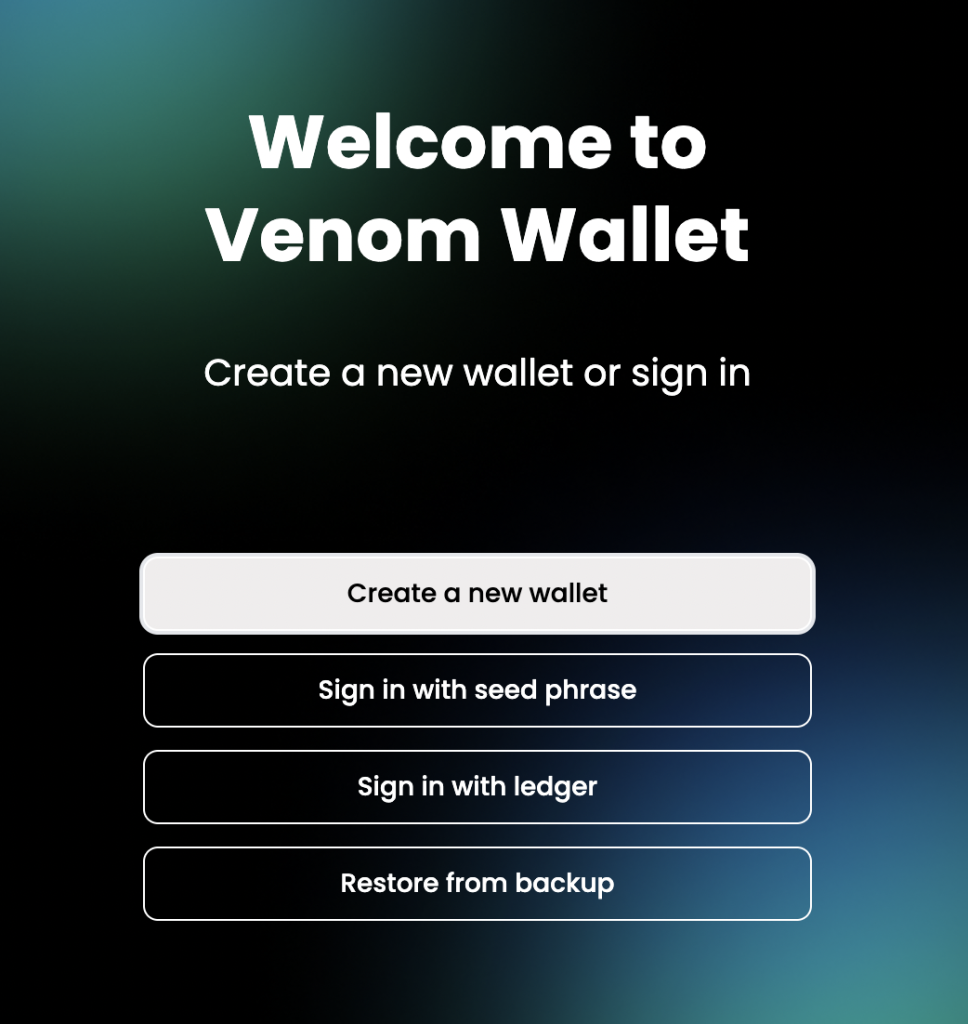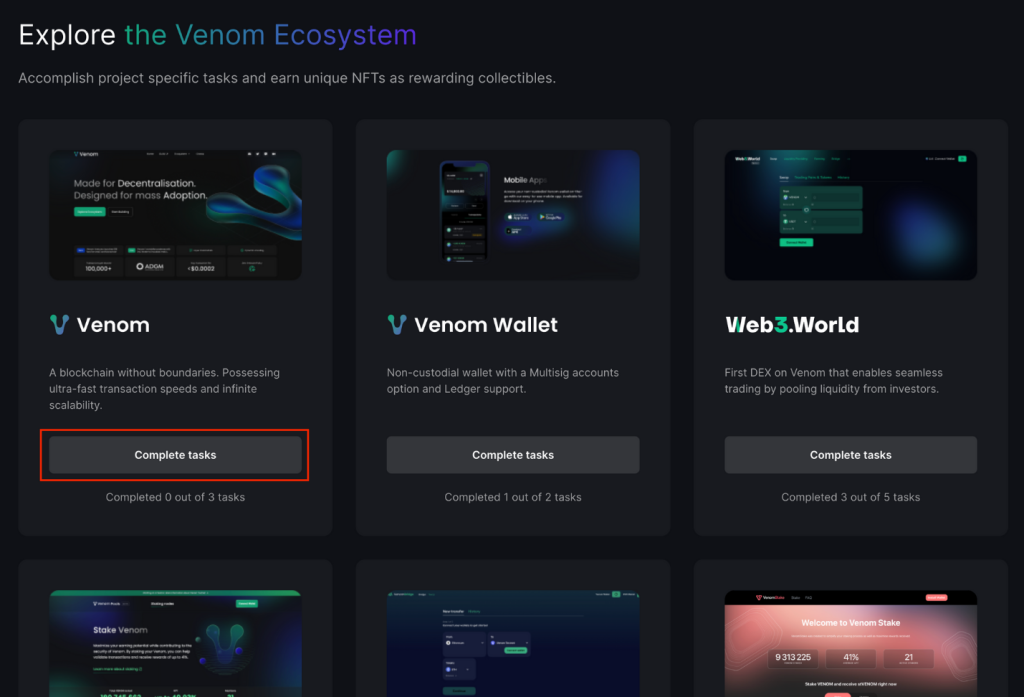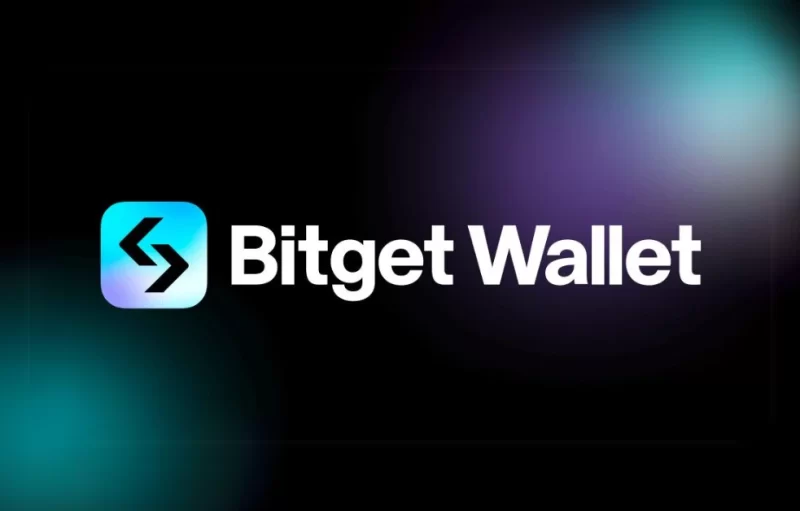Source: Venom Network
Launching a testnet ahead of the Mainnet has proven to be a best practice among blockchains, allowing for stress testing, bug finding, and a deeper exploration of the user experience. Before major funds (either fiat or cryptocurrency) are deposited from the community, it is important to refine the chain to ensure that the features are rich, flawless, and provide the best possible customer experience.
For clarification, a testnet is an experimental, parallel network to the planned mainnet. It is designed to test out new features and use cases on the network itself, while allowing developers to test their own products to ensure they will operate as expected once launched on the mainnet.
Looking at the 2023 lineup, there are a number of major upcoming blockchains with testnets either online or preparing for launch. These include:
- Mumbai, a Polygon-hosted chain to deploy smart contract logic
- Optimism Testnet, built with all Optimism’s features
- Goerli, Ethereum’s top PoA (Proof-of-Authority consensus mechanism) cross-client testnet
- Arbitrum Testnet, a stable and main testnet on the Nitro roll-up stack
- Solana Devnet, a testnet focused on unreal faucet airdropped SOL to allow developers to test smart contracts
- Sepolia, a newer merged PoS (Proof-of-Stake) testnet for Ethereum
The Venom Testnet is a major L0 that, similar to the testnets mentioned above, is working to strengthen the eventual mainnet launch while equipping developers with the tools and experience they need to build and test DApps (Decentralized Applications), a tokenomics structure, NFT projects, and DeFi protocols.
Venom Testnet: Overview
The Venom Blockchain will be a full-featured network built to provide a secure, intuitive environment for its users, as well as the many developers who will build on it. There are already many dApps and DeFi protocols planned, both from Venom itself and from enthusiastic builders. A key element for Venom is that it will be the first blockchain that is licensed and endorsed by Abu Dhabi Global Markets (ADGM).
Gaining access to this market with full support of ADGM is a major breakthrough, and Venom has been designed to host an entire ecosystem of crypto-based platforms to provide services. Venom plans to stimulate interoperability between itself and all blockchains, CBDC’s (Central Bank Digital Currencies), and even other financial platforms/institutions.
This is, frankly, a massive responsibility, which is where the Venom Testnet comes into play. The team has launched the testnet focused both on users and developers, and has provided a treasure trove of step-by-step instructions, documentation, and even incentivized tasks for users to complete. As with many testnets, Venom is providing non-valued tokens that users and developers alike can experiment with, testing wallets, transactions, staking, and more.
However, as a Layer-0 blockchain, the Venom testnet will be working to test its security and decentralization scalability with its Masterchain, Workchains, and Shardchains.
Venom Testnet: A Comprehensive Introduction
The Venom blockchain’s overall objective is to facilitate the mass adoption of Web3. It aims to do this by tackling the current blockchain challenges that prevent scalability, regulatory compliance and clarity, and the education of the broader public in order to increase not only awareness but trust.
The chain has been extremely proactive with regulators to ensure the development is not only approved but is working toward a cooperative ecosystem. In terms of scalability, Venom has developed a dynamic sharding protocol that can adapt to changes in the load by either splitting or merging Shardchains. This improves both overall performance and transaction throughput. Workchains are also a part of the network, allowing specialized blockchains to be created for various applications.
For all these objectives, the Venom testnet is critical in its role to stress test, verify the UX, and engage developers while providing them with the tools and documentation they need. Developers can explore the many different innovative use cases possible with the network, including
The core documentation for developers can be found here, and lays out using detailed steps and screenshots for nearly any process needed. Developers can work to build out innovative use cases involving stablecoins, CBDCs, public/private interoperability, and elements or DApps that drive these use cases.
Participating in Venom Testnet
To participate in the Venom Testnet, either as user or developer, all you need to do is download/install the Venom Wallet and have a Twitter account. Once done, you can go to the https://venom.network/ website to begin.

Once set up, you can go to the testnet site and claim tokens to use for testnet transactions. The 50 VENOM tokens earned don’t have monetary value but will aide in completing the initial testnet tasks.

The testnet has launched with eight DApps, consisting of Venom Wallet, VenomPools, VenomStake, VenomBridge, VenomScan, Oasis.Gallery, and VenomPad. The Venom foundation has set up specific tasks to ensure that participants will interact with each of the DApps in order to simulate various user experiences. Once the user completes these tasks, they are able to mint a limited Venom Foundation Testnet NFT.

Comparing Venom to Other Upcoming Testnets
The Venom testnet has similar goals to other testnets in that it aims to stress test the network before mainnet release to find any cracks, bugs, or suboptimal user experiences. The testnet is more focused toward specific objectives compared to more open-ended testnets with its structured testing process for users (including an NFT incentivization).
The fact that it has already developed a wide range of DApps that are representative of a typical chain is impressive, and will give these eight DApps a significant advantage when the mainnet is launched as they will likely benefit from both form and function improvements based on the actual user experiences seen in the testnet.
The Venom testnet has also invited the community of security researchers and developers to perform full-force stress tests and report any issues, essentially gaining the benefit of a Red Team without affecting mainnet users. Because of the unique structure of the network, the team has set up its DApps so that users can test out its ultra-fast speed, giving the community an idea of what will be possible on the mainnet.
This will certainly gain the interest of developers who have the need of high-speed transactions for their specific use cases, giving them a chance to develop and launch their DApp on the testnet in order to prove out the high-speed capabilities.
Further, its documentation for developers should allow for all manner of use cases, DApp development, and more, all without having to reach out to Venom for support. As mentioned before, the Venom testnet is especially important for the cryptocurrency and DeFi landscape in that it can open doors into a vast new market with its ADGM support.
Conclusion
Testnets are critical for any mainnet launch, especially for those that are full featured and complex, and especially for those who have major growth plans. The testnet allows a network to become the best version of itself, using trial by fire in a safe and secure manner.
The benefits go both ways, however. Developers can get a chance to ensure their DApp runs smoothly, and can get essentially free user testing by those participating in the testnet. This allows even solid DApps with zero bugs to identify those areas where the user experience can be improved for intuition, function, and even entertainment.
Users, for their part, get a chance to practice using the various network features and DApps ahead of time, giving them an advantage when the mainnet launches, and allows them to try even high risk actions without risking actual value.
The testnet process only works with community participation, however. We all need to find those projects we are excited about and do our part to explore and become part of the testing process. For developers and users looking forward to the Venom mainnet launch, now is the time to jump in, get a sneak peak at the ecosystem in progress, and earn some rewards in the process.
The post appeared first on Coinpedia






